A Journey in Eastern Estonia
Outside the front door, a crowd of rowdy transvestites were passing by. They had bottles of beer in their hands. One of them vomited against the wall. Another told us they were from London, English lads visiting Tallinn for a stag party. We had not asked. We had not needed to.
When they had moved on we crossed the street. The Russian restaurant we entered was brightly decorated and full of violin music. The year was 2010. 1The author travelled to eastern Estonia in September 2010. The information in the article dates from that time. Two blond girls in traditional dresses—colourful and embroidered—served us blinis and caviar and small glasses of vodka, followed by roasted duck. When asked (in English) whether they spoke Estonian they both said no.
Timeline of Estonian History
| 1208 | German ‘crusaders’ invade Estonia. Denmark establishes control over northern Estonia in the following decades. ‘Baltic Germans’ gradually become the dominant class, a position held until 1919. |
| 1346 | The Danish crown sells northern Estonia to the Livonian Knights, affiliates of the Teutonic Knights. |
| 1583 | Northern Estonia becomes the Swedish Duchy of Estonia. Southern Estonia forms part of Livonia and thus Poland. |
| 1645 | All of Estonia is consolidated as part of the Kingdom of Sweden. |
| 1700-1721 | The Great Northern War, following which Estonia becomes part of the Russian Empire, but with considerable local autonomy. |
| 1918 | The independent Republic of Estonia is declared. The War of Independence ends with the Treaty of Tartu in 1920. |
| 1940 | The USSR annexes Estonia as the Estonian SSR, but German occupation follows from 1941 to 1944. In 1944, land in the east of the Estonian SSR is transferred to the Russian SFSR. Significant numbers from other parts of the USSR are settled in Estonia over the following decades. |
| 1991 | The independent Republic of Estonia is re-established. |
| 2004 | Estonia joins the EU and NATO. |
When the Soviet Union broke up in the early 1990s, a number of ethnic Russians found themselves outside Russia as residents of the new post-Soviet republics. In Ukraine, ethnic Russians comprised 22 per cent of the population (the largest number of Russians in the ‘near abroad’, concentrated in the east and south of the new country), in Kazakhstan 38 per cent, in Latvia 34 per cent, and in Estonia 30 per cent. 21989 Soviet Union census. The Russian language is very similar to its East Slavic linguistic cousin Ukrainian. Indeed in places the native speech is a local blend of the two languages—a so-called ‘transitional dialect’. But Russian is very different indeed to Finnic Estonian.
When Estonia became independent from the Russian Empire after the First World War, all subjects of the Empire resident in the new Republic of Estonia qualified for Estonian citizenship regardless of ethnicity or religion. In 1991, when Estonia again became independent, after the years of Soviet occupation, its citizenship rules were less generous. Essentially, post-World War II immigrants (mostly Russians, but also from other Soviet Republics) and their descendants had to be naturalized to become Estonian citizens and the requirements for naturalization included a considerable degree of fluency in the Estonian language and passing a test in Estonian history. This was beyond many of Estonia’s Russian speakers.
Russia, as the successor state to the USSR, offered any USSR citizens (regardless of ethnicity) Russian nationality simply by asking for it before the year 2000. A number of Russian speakers in Estonia took up the offer. Some moved to Russia. But those who did not take up Russia’s offer and could not meet the tests for Estonian nationality became stateless or, as this peculiar status is known in Estonia, of ‘undefined nationality’. These people cannot vote in either Estonian national or EU elections. While the stateless can apply for an ‘Estonian Alien’s Passport’, that document is not recognized by the EU as giving rights of free movement or permission to work in other EU countries. When Estonia became independent from the Soviet Union in 1991, 32 per cent of the country’s residents were stateless.
Most of Estonia’s Russian speakers outside the capital live in the far northeast of the country. Here too are Estonia’s oil-shale mines and the power stations fed by the ‘burning rock’. Estonia is the only country in the world where the primary energy source is oil shale. It is second only to China as a major producer of the stuff.
Estonia’s oil-shale deposits have been exploited on a relatively small scale for centuries. The major expansion of the industry, and the power plants using it, took place in Soviet times after the Second World War. It has left behind, in an otherwise flat landscape, deep abandoned pits and massive slag heaps rising above the fields. The industry has also left behind a legacy of pollution—of air, soil, and groundwater. This remains a problem today, even as oil-shale production is managed on a long-term downward trajectory and as more efficient ways of burning the rock are introduced. There is, inevitably, also a health effect on the workers in the industry and on nearby residents. Rates of cardiovascular disease, stroke, hypertension, diabetes, and lung cancer are higher here than elsewhere in Estonia.
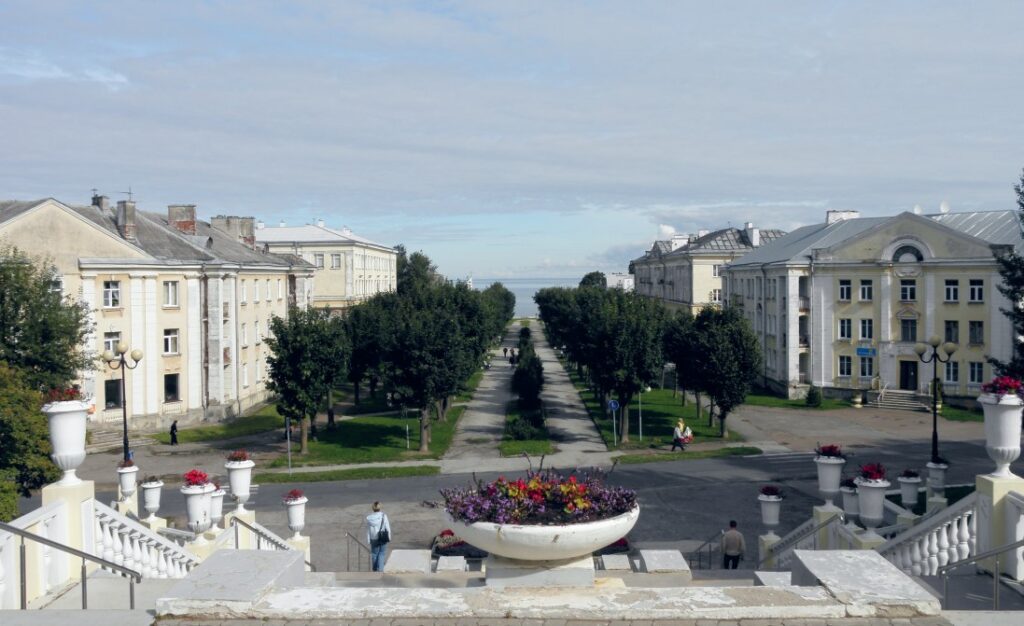
photos in this article are by the courtesy of the author
Kohtla-Järve lies at the heart of Estonia’s oil-shale producing region. It is a grim place, a world away from the smart boutiques, classy restaurants, and high-tech offices of Tallinn. Dilapidated low-rise apartment blocks line broad streets here. The grass along the wide, well-intentioned avenues is worn away, littered with shattered glass, empty cans, and unwanted pieces of wood and metal. The faces that watched us were blank. A few of the more energetic ones glowered. None seemed to have anything to do or anywhere to go. Clothes were faded and dusty. We did not linger.
On the coast nearby is the town of Sillamäe. Like Kohtla-Järve, its inland cousin, Sillamäe owes its existence to the oil-shale fields. In Soviet times, Sillamäe did not officially exist. The postal address for those who lived here was in Leningrad. Administratively the town was not even part of the Estonian SSR, but rather an exclave of Russia. In this secret, closed place, uranium was extracted first from the oil shale mined nearby and later from minerals brought in from elsewhere. It is said, though I do not know on what basis, that the USSR’s first atomic bomb was made using uranium processed and refined at Sillamäe. Certainly, the works at Sillamäe enabled a large number of lethal nuclear weapons to be built.
Scientists, technicians and workers were brought from all over the Soviet Union to live and work at Sillamäe. Because of the strategic importance of their work in this secret place, and because they could not leave it, Stalin built them an elegant and pleasant town. The Stalinist neo-classical architecture survives, complete with hammers and sickles embedded into the pastel-coloured facades. The post-Soviet Estonian authorities have kept it in good repair. But it is a quiet place today. You see few people in the streets, even at lunchtime on a sunny late summer’s day. The rare-earth factory that replaced the secretive uranium processing industry employs fewer people. Unemployment rates are high. Not far away and set beside the waters of the Gulf of Finland is a radioactive tailings pond. It is apparently in far better, safer condition now than it was in the days of the Soviet Union. But we nonetheless declined the opportunity to visit it.
Farther east still, right on the Russian border, lies Narva, Estonia’s third largest city. It is 95 per cent Russian-speaking. Today it is uncompromisingly Soviet in its architecture. But this town’s history is far more ancient than that. Narva Castle, overlooking the river, dates from the thirteenth century, at a time when northern Estonia was under Danish rule. The Narva River in those Hanseatic times was a significant trade route—up the river to Lake Peipus and then southward along the Velikaya River (literally the ‘Great River’) that flows through Pskov, and on into the heartlands of Russia.
Denmark sold northern—maritime—Estonia to the Livonian order, a branch of the Teutonic Knights, in 1346. The castle at Ivangorod on the opposite bank of the Narva River was built by Ivan III, ruler of Muscovy, in 1492. After a brief period under Russian rule in the mid-sixteenth century, Narva became part of Sweden in 1581. Estonia remained Swedish until the Great Northern War (1700–1721) when, under Peter the Great, Russia conquered the country.
Narva was apparently once a charming, walled, Baroque town, little changed in its centre since being rebuilt in the seventeenth century after a devastating fire. Then, in 1944, the Old Town was almost entirely obliterated in the Battle of Narva, where the Germans held up the westward Soviet advance for six months. Most of the damage came from intense Soviet bombardment. Civilian casualties were few, however, as the Germans had evacuated most of the population before the battle became intense. They were perhaps the lucky ones. Estonia suffered enormously between 1939 and 1945. The country is estimated to have lost 25 per cent of its population during that time—executed, deported, escaped, or killed as soldiers drafted into the occupying armies.
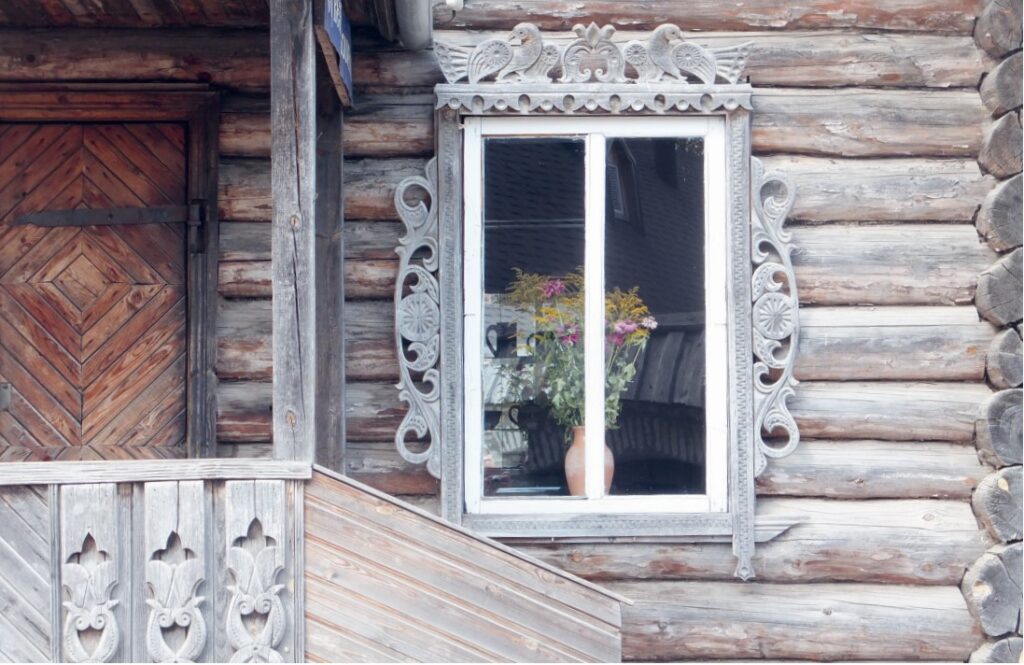
After the war, the Soviet authorities prevented the pre-war population from returning to Narva and repopulated the town with settlers from elsewhere in the USSR. They housed them in the grey, low-rise apartment blocks that dominate the town today.
In a café adjacent to a shop that sold Soviet-era trinkets, we drank glasses of cherry juice, that so typical Russian drink. We then crossed the street (named after Pushkin) to the Swedish Lion Monument. It stands on a hill above the river and is a memorial to an earlier Battle of Narva fought between Sweden and Russia in 1700. Sweden came out of that battle victorious, but four years later it lost the coast of the Gulf of Finland to Russia, including the swamps at its eastern end where St Petersburg would be built. The Swedish Lion you see today is the second one to stand in Narva. The first was erected during the time Estonia was independent between 1918 and 1940. It was destroyed during the 1944 battle. Its replacement was inaugurated in 2000, after Estonia had once again become an independent republic.
From the lion we walked down to the riverbank. The opposite bank is in Russia. We watched people swim in the water. Today, this eastern edge of the EU is a peaceful border; the two castles picturesquely facing each other are silent relics of a different era, and a complete contrast to the barbed wire and machine-gun turrets of the Iron Curtain that ran across Europe from the Adriatic to the Baltic until 1989. Indeed, the barbed wire and machine-gun turrets ran along the Baltic coast as well, keeping Estonians and others from escaping the USSR by sea.

prevent escape by sea from the communist paradise
South from Narva, beyond the mines and power stations, you eventually enter a rural landscape of fields and woodland. Here, outside the towns, the population of Estonia is overwhelmingly ethnically Estonian. For a long time the Estonians were a rural people—poor peasants and serfs in their own land. From the days of the Teutonic Knights, most of the gentry—the nobility, the landlords—were Baltic Germans. The German-speaking gentry were dominant under Denmark, Sweden, and Poland, and were confirmed in their position after the Russian takeover in the early eighteenth century. They enjoyed considerable autonomy in the Empire’s Baltic provinces. German remained the language of commerce, official documents, and the educated, even though Germans made up less than 10 per cent of the population.
One of these Baltic Germans was Michael Andreas Barclay de Tolly. Of Scottish descent and speaking German as his native language, this Estonian landlord rose to become field marshal of the Imperial Russian Armies at the time of Napoleon’s 1812 invasion of Russia. He is commemorated in, among other places, Walhalla—a monument honouring distinguished Germans through the ages overlooking the Danube in Bavaria.
The privileges and wealth of the Baltic Germans came to an end with Estonia’s independence after the First World War. Most of those who remained in the country afterwards were resettled in Germany twenty years later under Hitler’s Heim ins Reich policies, part of the Nazi–Soviet population transfers agreed under the 1939 Molotov–Ribbentrop Pact. Scattered across Estonia (and Latvia), however, you still find the great houses (manors) in which they once lived. Some are abandoned and semi-ruined. Many others have been restored and repurposed.
While the rights and privileges of the German nobility persisted when Estonia became part of the Russian Empire, the legal position of the Estonian-speaking serfs deteriorated. Even though they were formally emancipated earlier than their counterparts in Russia proper, there was little, or only slow, real change in status until later in the nineteenth century. National awakening began in the mid-nineteenth century. Music, as well as the other arts, played a significant role in the revival. The first Estonian folk music festival was held in 1869.
One of the first acts of the Republic of Estonia after it declared independence, and during the bitter war with the Bolsheviks who wanted to keep it in the Soviet Union, was the Land Reform Act of 1919. More than a thousand manors (almost all belonging to Baltic Germans, and owning nearly 60 per cent of the country’s agricultural land) were expropriated. It was perhaps the most radical redistribution in Europe outside a communist country, and laid the foundations of the country we see today.
Estonia’s musical traditions were kept alive, often clandestinely, as a focus of nationhood during the Soviet years, and came to the fore again in the late 1980s in the dying days of the USSR. The non-violent movement that led to the recovery of Estonia’s independence in 1991 has been called the ‘Singing Revolution’.
***
Lake Peipsi, which drains to the sea via the River Narva, is Europe’s largest transnational lake. It is so vast that standing on its reed-fringed shore we could not see across to the Russian side. We met a man in a camper van parked on the shore here. He had driven alone from Germany. His ancestry, he said as he stared out over the water, was deep in this land.
Along this tranquil shore of Lake Peipsi you will find a number of small settlements of Russian Old Believers. Unlike most of the Russians in the towns of north-eastern Estonia, the ancestors of these people have lived here for centuries. As such, they have not had the issues with Estonian citizenship of the Russian-speakers who arrived during the time of Soviet occupation.
The Old Believers are a group of Orthodox Christians who refused to accept the reforms introduced into the Russian Church by Patriarch Nikon in the mid-seventeenth century in order to bring the Russian liturgy into conformity with that of the Greek Orthodox Church. While the desire to defend and preserve the purity of the faith was paramount in the Old Believer movement, scholars now detect in it an underlying, independent attitude towards ecclesiastical and state power, including the insistence that individuals had the right to arrange their own spiritual lives without state interference.
Those who resisted the changes were considered schismatics (раскольники, raskol’niki) 3Fyodor Dostoevsky derived the name of his fictional protagonist in Crime and Punishment—Raskolnikov—from the Russian term usually applied to the Old Believers. and became a persecuted religious minority. They lost their civil rights and in some cases were tortured and executed. As a result, some Old Believers moved to remote parts of Russia. Others left the country altogether, including those who founded the communities on the western shore of Lake Peipus, then part of the Kingdom of Sweden.
Dusk was falling as we left the Old Believers’ settlements. The early September sky had completely cleared and the temperature had dropped. A mist rose from the land, but to a height of no more than two metres. Through the darkening mist we saw a single light coming towards us. A cross-country skier, wheels fitted to the bases of his skis and a head torch strapped to his helmet, glided along the smooth road. Winter in these northern latitudes can be severe. It was clearly not far away.
***
Setomaa, the homeland of the Seto people, lies at the southern end of the lake, straddling the current border between Estonia and Russia. The Setos are an indigenous ethnic group speaking their own Finnic language. Estonians often consider Seto only a dialect of Estonian, but the Setos themselves insist that Seto is a language in its own right. While most Estonians today are at least nominally Lutheran (and were Roman Catholic before the Reformation), the Setos are Orthodox. When the rest of Estonia was forcibly converted from paganism to Roman Catholicism in the thirteenth century, the Setos were living in part of the old Novgorod Republic (Pskov Republic from 1348) and remained pagan until the fifteenth or sixteenth century, when Orthodoxy became their formal religion. Their neighbours, however, say that the Setos are still semi-pagan, practising forms of shamanism, though how much of this is a modern revival or invention, in a time when paganism has become fashionable, is difficult to ascertain. Specifically Seto festivals, suppressed under Soviet rule, are again flourishing.
Historically, the cultural capital of the Seto people was Petseri. Today, Petseri is just across the border in Russia. It is known in Russian as Pechory and is home to one of Russia’s great monasteries. Between the First and Second World Wars, Petseri and its hinterland (then known as Petseri County) were included within the Republic of Estonia. Estonian peasants and veterans of the War of Independence were settled on expropriated land here. Even now, 15 per cent of the population of Petseri is ethnically Estonian. There is a Lutheran church in the town, and the Orthodox church just outside the monastery gates conducts some of its services in Estonian.
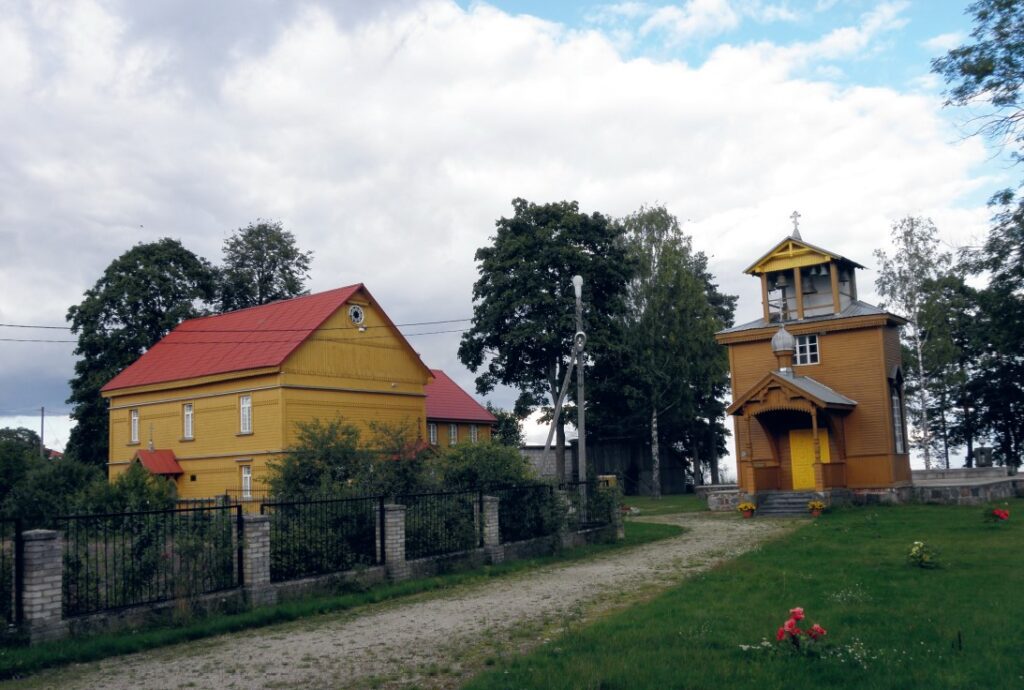
Russia in the seventeenth century, settled on the western shores of Lake Peipsi, then part of
the Kingdom of Sweden
As is well known, the end of the Second World War saw the westward expansion of the USSR, as well as the establishment of its ‘sphere of influence’ in Central Europe—one of Stalin’s chief aims at the 1945 Yalta Conference for the post-war ordering of the war-torn continent. 4And a hangover from the stipulations of the Molotov–Ribbentrop Pact of August 1939. The three formerly independent Baltic States were now Soviet Socialist Republics of the USSR. With the westward shift of Poland into East Prussia, Pomerania, and Silesia, its former inter-war eastern territories were added to the Lithuanian SSR, the Belorussian SSR, and the Ukrainian SSR. The Sub-Carpathian tail of Czechoslovakia, with its Rusyn and Hungarian populations, was given to Ukraine, and Ukraine also gained the northern half of Bukovina and coastal Bessarabia from Romania. The rest of Bessarabia became the Moldavian SSR, with its Moldavian language (identical to Romanian) henceforth to be written in Cyrillic script.
Perhaps less well known are the early post-war changes to the borders within the Soviet Union between its constituent republics. In 1954, probably as part of a power struggle in the Kremlin and with Khrushchev (former headman in the Ukrainian SSR) almost certainly implicated, Crimea, despite its majority Russian population, was taken away from the Russian SFSR and given to Ukraine [a historic moment shedding light on the roots of the currrent Russia–Ukraine War and Russian claims to Crimea]. In 1956, the Karelian SSR was disbanded and made part of the Russian SFSR. The Estonian SSR, created in 1940 when the USSR annexed the country, lost (to the Russian SFSR) two stretches of land: territory on the east bank of the River Narva in the north and much of Petseri County in the south.
These internal lines on the map of the Soviet Union acquired international significance when the Soviet Union broke up in 1991 and each of its constituent republics became an independent country within the borders of the former SSRs. Russia recognizes Estonia today as the successor state to the Estonian SSR; but Estonia considers itself the revival of the inter-war Republic, within that entity’s borders, following a period of Soviet occupation. As of 2010, the border question here had not finally been ratified. As a result of this divergent treatment of the area—combined with Estonia’s post-Soviet citizenship laws—inhabitants of the old Petseri County, now part of the Pskov Oblast in Russia, who can demonstrate that they or their ancestors were there before 1940, and regardless of Estonian, Russian, or Seto ethnicity, are able to claim Estonian nationality without undergoing the tests involved in the Estonian naturalization process. In conversations in Pechory, I was given to understand that quite a number of the area’s residents have both passports. Most of the Seto population from the area have taken advantage of their Estonian nationality to move across the border. Those who remain constitute a protected minority.
Pechory grew up around the monastery of the Pskov-Caves Monastery of the Holy Dormition, formally founded in 1473 on the site of hermit caves deep in the forest. Unlike most (or perhaps all) other monasteries in Russia, the Pechory Monastery has never been closed since its foundation, despite its border position and attacks by Germans, Poles, Swedes, and Lithuanians over the centuries. It escaped the worst of Stalinist atheism by being outside the Soviet Union in the inter-war years of the twentieth century—‘the Pskov-Caves Monastery was assigned to Estonia by the providence of God in 1922 and remained there until 1940, and was thus saved from general ruin and desecration’. 5Official website of the Pskov-Caves Monastery. But after the Soviet Union annexed Estonia in 1940, the abbot was executed by the Soviet authorities. When the Germans arrived in 1941, the monastery managed to stay open, providing succour to refugees and the wounded, through the years of Nazi occupation. But when the Soviets returned, they arrested the 80-year-old abbot and, suspecting the monastery of collaboration, sentenced him to fifteen years in prison. He died in prison soon afterwards. But the Soviet authorities left the monastery open.

Outside the monastery gates stands a statue of Cornelius, who was abbot of the Pechory Monastery in the mid-sixteenth century. Under him, the monastery reached perhaps its most glorious years, growing from 20 to 100 monks, and carrying out missionary work among the local population. The conversion of the Setos to Orthodox Christianity is attributed to Cornelius’s mission. It was in his time also that, in cooperation with the Russian military, the defensive walls were built around the monastery. Yet when Cornelius went out to greet Ivan IV (‘the Terrible’), the Tsar in a fit of anger beheaded him on the spot.
We walked through the arch beneath a white building that serves as gateway to the monastery and emerged into a large courtyard filled with greenery and exuberantly coloured buildings. Small groups of pilgrims and an occasional monk walked by. There are ten churches within the monastery’s walls and a thriving monastic community of about 90—almost as many as in Cornelius’s day. It was a delightful place to linger.
A straight road leads south from Pechory to join the old Russian trunk road between St Petersburg and Riga. As we drove along it, we passed a band of pilgrims, an Orthodox priest in full regalia at their head, walking in the opposite direction—towards Pechory. Set back from the road and evenly spaced out along it is a series of attractive wooden farmsteads and well-farmed land. I had not seen anything similar in this part of Russia. How did this different settlement pattern come about? Was it because the area had been part of Estonia between the wars, with Estonians settled on lands formerly belonging to the monastery? Was it because it had somehow avoided collectivization? Was it the result of something more recent than that? Or was it because this is the ancient land of the Seto people? No-one could tell me. It is a question I will ask again if I ever return to this lovely corner of the world.
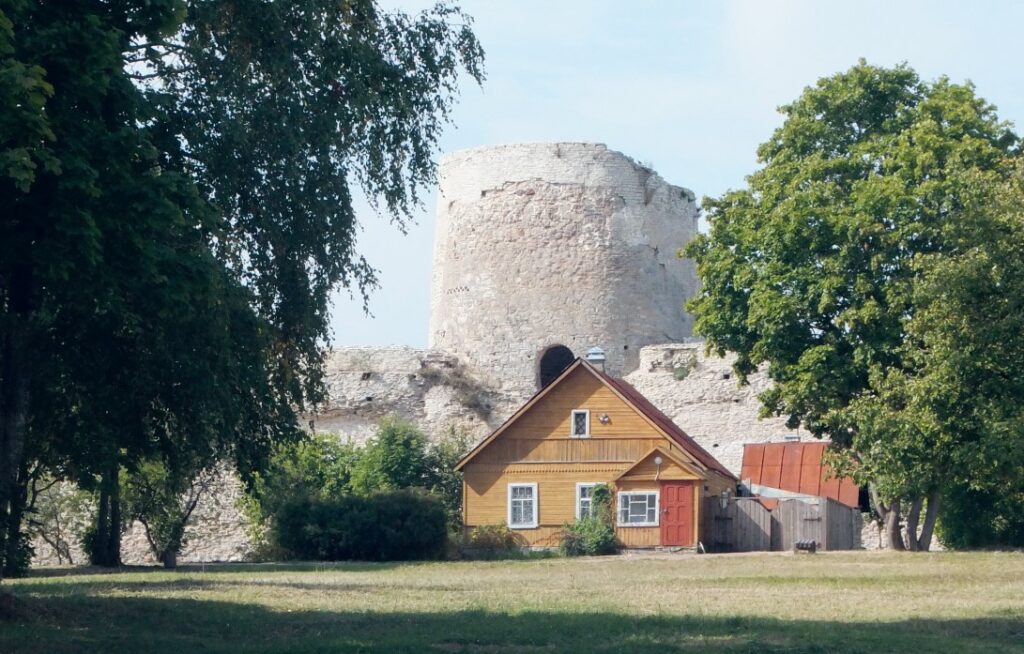
To the southeast of Pechory lies the village of Izborsk. The 1920 Treaty of Tartu drew the border to the east of here, so Izborsk too spent the interwar years as part of the Republic of Estonia. In Estonian the village is known as Irboska. Charming wooden houses abound and the still air, when we were there, smelled of apples and wood smoke. Izborsk is an ancient place, first mentioned in the Russian Primary Chronicle. Rurik’s brother Truvor settled here in 862. He is allegedly also buried here. Greek and early Arabic coins and shells from the Indian Ocean have been found here, testament to the village’s role in the trade routes that crossed Russia from Scandinavia to the eastern Mediterranean.
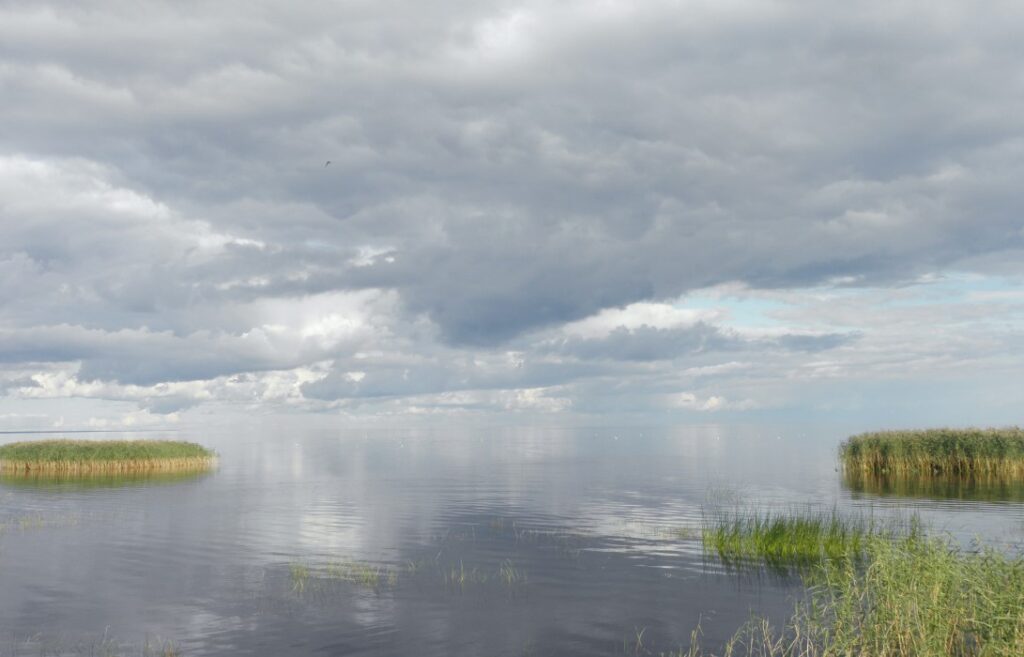
Izborsk has the oldest stone fort in Russia. There was a fortress here from the late seventh century. It took its current form in the early fourteenth century and was reinforced as one of Russia’s border forts in the fifteenth and sixteenth centuries. It fell out of use as a working fort only after the western expansion of the Russian Empire in the Great Northern War. The village survives today and looks so prosperous because of the tourists who come to see the old castle and what is meant to be Truvor’s burial mound. It is a contrast to many other rural settlements in the Pskov Oblast, the part of Russia that has, although so close to the EU, been suffering the most since the end of the Soviet Union from depopulation and abandonment. 6Of the 6,000 abandoned villages (‘population points without population’) recorded in Russia by the 2010 census, 2,000 were in Pskov Oblast. ‘Russia’, our guide said, ‘begins here.’
- 1The author travelled to eastern Estonia in September 2010. The information in the article dates from that time.
- 21989 Soviet Union census.
- 3Fyodor Dostoevsky derived the name of his fictional protagonist in Crime and Punishment—Raskolnikov—from the Russian term usually applied to the Old Believers.
- 4And a hangover from the stipulations of the Molotov–Ribbentrop Pact of August 1939.
- 5Official website of the Pskov-Caves Monastery.
- 6Of the 6,000 abandoned villages (‘population points without population’) recorded in Russia by the 2010 census, 2,000 were in Pskov Oblast.
